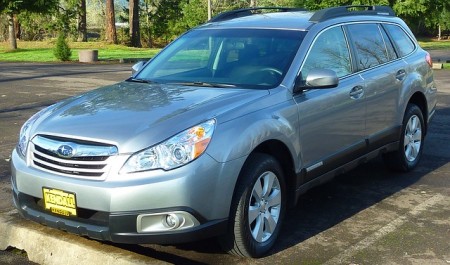Mainstream media has portrayed robust auto sales, implying a resounding economy with new consumer cash being poured into pent-up demand for the latest automobiles. Bloomberg reports:
- Frigid End Can’t Stop Best U.S. Auto Sales Year Since ’07
- GM Joins Ford With Surprisingly Robust June Auto Sales
But is there more to be seen under the hood?
In a revealing article by Autonews titled “Auto Sales Would Be Higher in a Normal Recovery” situations exist that demonstrate not only does the industry recognize that sales are not indicative of a “normal recovery” but point to a financial weakness in a key, car-buying demographic.
“If this were a normal recovery, the auto industry should be selling a lot more cars than it is this year. But this is no normal recovery, said Itay Michaeli, director of Citi Investment Research and Analysis.
Michaeli said that longer vehicle life and families making do with fewer vehicles are having a profound impact on the number of automobiles sold.
The main issue holding things back? It’s not consumers in their 20s postponing buying decisions. It is young families who don’t feel economically secure.”
“Respondents 35 to 44 years old should be buying an additional vehicle as they have children, but they are reluctant.
They are afraid to buy a second car.”
New auto loans to borrowers with the lowest credit scores were up 51% first quarter compared to the same period in 2013, according to Experian Automotive.
Meanwhile, new auto loans to borrowers with the highest credit scores were down 7% over the same time frame.
In a related article by Tyler Durden,
“The only missing link has been consumer disposable income. So with car sales through the roof, the US consumer must be alive and well, right? Wrong.
Virtually all the growth in the US automotive sector in recent years has been the result of a near record surge in car leasing (where as we know subprime rules, so one’s credit rating is no longer an issue) not outright buying.
Leasing soars: Household outlays on leasing are booming at a 20% year-over-year pace, a clear sign that demand for vehicles is alive and kicking. With average lease payments lower than typical monthly ownership costs and with a down-payment not typically required to enter into a lease, the surge in vehicle leasing is likely a sign that financial restraints are still holding back some would-be buyers.
It could also translate into even higher leases, which in turn bottlenecks real, actual sales. Of course, the problem is that leasing isn’t buying at all. It is renting, usually for a period of about 3 years.
Which means that at the end of said period, an avalanche of cars is returned to the dealer and thus carmaker, who then has to dump it in the market at liquidation prices, which in turn skews the ROA calculation massively. However, what it does do is give the impression that there is a surge in activity here and now… all the expense of a massive inventory writedowns three years from now.
Which is precisely what will happen to all the carmakers as the leased cars come home to roost. In the meantime, enjoy the ZIRP buying, pardon leasing, frenzy.”
To sum it up, loans for purchasing cars are being issued to people with zero or bad credit, and people leasing vehicles is up 20%. These subprime loans and leases are being touted as robust auto sales, indicative of a roaring economy.
Sorry to say, it’s just another illusion.
Article authored by Carol Serpa. You can find the original story right here.

